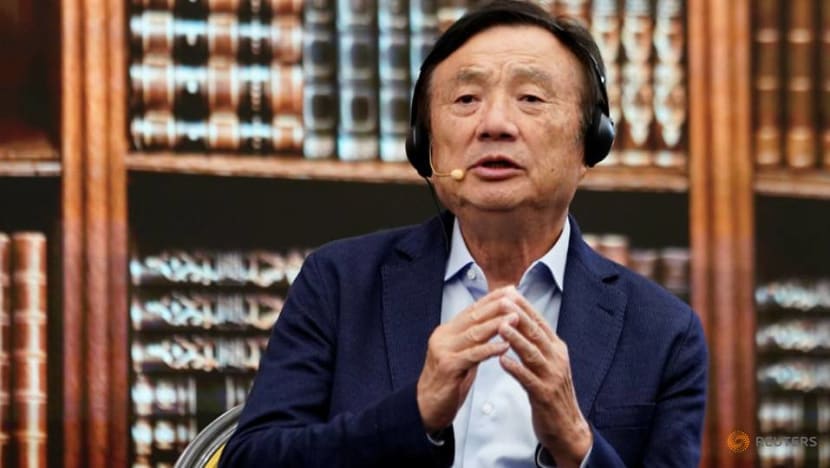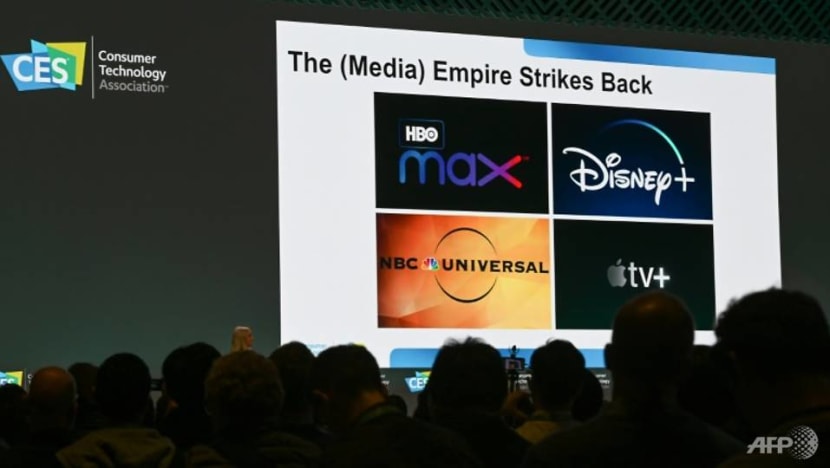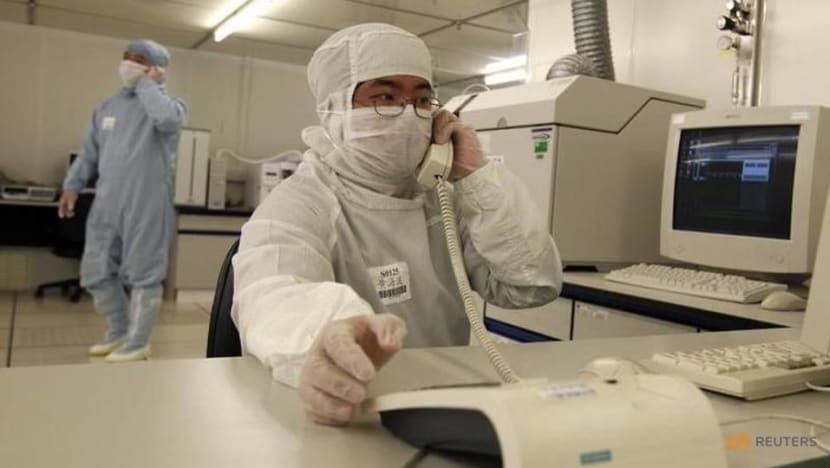commentary Commentary
Commentary: The US-China tech rivalry is fracturing the world and affecting trade, firms and jobs
This surge in techno-nationalism will result in some form of bifurcation, says Alex Capri.

It's not just a trade war between the US and China. (Photo: AFP/CHIP SOMODEVILLA)
SINGAPORE: America and China are not engaged in a “trade war”.
The world’s two superpowers are locked in a much bigger systemic rivalry that will fracture the global economic landscape in ways not seen since the Cold War between America and the former Soviet Union.
At the heart of this rivalry is technology. For both China and the US, achieving supremacy in the industries-of-the-future has become paramount, as AI, robotics, semiconductors and other high-tech niches become multipliers of soft and hard power.
READ: Commentary: Despite Phase 1 trade deal, some US-China decoupling may get underway
I call this emergent phenomenon techno-nationalism.
A HYBRID STRAIN OF MERCANTILIST THINKING
Techno-nationalism is a hybrid strain of mercantilist thinking that links technological innovation and capabilities directly to a nation’s economic prosperity, national security and social stability. States will increasingly intervene in markets and look to promote their own champions while, simultaneously, undermining other state and non-state actors.
READ: Commentary: The new wave of Chinese tech champions you never heard of but should know
Washington’s global campaign to block the adoption of 5G wireless technology made by Chinese telecom giant Huawei is a perfect microcosm of this new world.
The US has all but convinced other members of its so-called “Five Eyes” intelligence alliance (which also includes Australia, New Zealand, Canada and the UK) to either block Huawei 5G equipment entirely, or relegate Huawei components and equipment to peripheral, “non-core” infrastructure.
Following this logic, New Zealand's policy makers blocked a proposal by Spark, the country’s second largest carrier, to use Huawei as an exclusive supplier for future 5G infrastructure and mandated a multi-supplier system, including Samsung and Nokia, who will build core infrastructure.

When it comes to semiconductors - which comprise the critical elements of telecom technologies - Washington’s effort to stymie Huawei have revealed the complexity of global value chains.
In 2018, Huawei bought U$70 billion worth of components, with U$11 billion going to US chip makers such as Qualcomm, Intel and Micron Technology. Imposing strict controls or outright restrictions on US technology to Huawei has thus put in motion a seismic shift in the tech landscape.
The Huawei spectacle has brought to light new techno-nationalist challenges for global commerce, including the de-coupling and restructuring of supply chains, as well as the rise of a new wave of industrial policies - especially in the West - designed to counter China’s model of state-centric capitalism.
READ: Commentary: The incredible resurrection of state capitalism in China
DECOUPLING OF GLOBAL VALUE CHAINS
The decoupling of American and Chinese firms is inevitable, no matter what happens in the next rounds of trade talks between Washington and Beijing.
To tackle this newfound vulnerability that threatens growth, Chinese firms will double down on efforts to “de-Americanise” their supply chains and attempt to replace US controlled technologies on the so-called “dual-use” list - defined as commercial items that also have military or national security implications.
In 2019, this decoupling process was accelerated when Washington blacklisted an additional 28 Chinese entities on the grounds of human rights violations in Xinjiang province.
China’s HikVision, the world’s largest manufacturer of surveillance cameras and facial recognition technology, was severely impacted. Nvidia and Intel, two US chip manufactures, were critical suppliers of computer processing and graphics technology for HikVision’s products.
READ: Commentary: Trump will make China great again

The HikVision is another watershed in that it has galvanised Chinese companies to cut their reliance on US technology and decouple as quickly as possible.
It also highlights the glaring ideological contrasts between the US and Chinese political systems: Differences in privacy standards, surveillance practices and individual freedoms will define how techno-nationalist policies and restrictions provoke more decoupling in the future.
In some cases, the speed at which technology can be replaced or replicated is surprising. Huawei claims to have found alternate sources - or devised its own - for American technology in its P30 Smart Phone.
This includes the replacement of the Android operating system by Google, radio frequency chips by Oorvo, DRAM and NAND chips by Micron, critical design software by Mentor Graphics and Synopsis and other American firms.
READ: Commentary: The brewing discontent with trade and one step to restoring faith in globalisation
This decoupling extends beyond physical supply chains. It also impacts the way human capital is employed.
Shortly after being put on Washington’s restricted entity list, Huawei laid off 70 per cent of its staff at its Silicon Valley-based R&D facility, Futurewei, fearing the theft of IP and technology transfer by scientists that might be co-opted by US espionage agencies.
This highlights the deterioration of trust in US-China relations that has pervaded global value chains, and has become increasingly evident as Chinese firms look for new sources of talent.

Ren Zhengfei, the CEO of Huawei, held a press conference in September of 2019 and announced that Huawei would be looking towards Russia to find mathematicians and Europe to find scientists.
Taiwan figures to be an increasingly strategic target for Beijing as it looks to tap the island’s deep reservoir of computer engineers and world-class expertise in the semiconductor sector.
Techno-nationalism will not only lead to the restructuring, localisation and ring-fencing of physical supply chains. It could spill over into academic and professional circles, redrawing new boundaries around human talent.
THE RISE OF TECHNO-NATIONALIST INDUSTRIAL POLICIES
An escalating tech war will produce a wave of new industrial policies by the US and its historic allies.
The EU has called for the creation of a US-EU Trans-Atlantic economic model that can compete directly with Beijing and block China’s attempts to influence global standards in 5G and other next-generation technologies.
This new narrative reflects ideas embodied in a recent EU paper which unequivocally labelled China a “systemic” rival.
Specifically, Brussels has stressed the need to join forces with the US to counter efforts by China’s state-backed companies to influence the International Telecommunications Union (ITU) and the International Organisation for Standardisation (ISO).
READ: Commentary: Why a US-China ‘Cool War’ may be worse than a Cold War

This new policy direction presents a techno-nationalist conundrum: How to protect policy objectives while continuing to seek new opportunities in China’s market.
For example, Germany recently blocked an attempt by a Chinese company, the Yantai Taihai Group, to buy Leifeld Metal Spinning AG, a high-tech machine tool firm, on the grounds of national security, while simultaneously actively seeking trading opportunities with China for the general business sector. This is a delicate game but may be our new reality.
Similarly, the Dutch government has withheld export licenses for the sale of highly sophisticated semiconductor equipment from the Dutch company ASML, to Chinese semiconductor national champion SMIC - aligning with Washington’s techno-nationalist policies.
READ: Commentary: China makes inroads into Europe. That's creating some discomfort
Meanwhile, Washington continues to explore ways to fund Huawei’s competitors in 5G networks, specifically, European companies Nokia and Ericsson.
The object is to counter Huawei’s access to multi-billion-dollar credit lines from China’s state-owned banks and technology subsides, which allow longer repayment terms and enable Huawei to sell high quality equipment at lower prices.

Given the scale of Beijing’s commitments to fund semiconductors, AI, robotics and other key industries of the future- through initiatives such as the Made in China 2025 plan, with state-backed investments of more than US$300 billion over 10 years - there is strong incentive in Washington and beyond to resort to techno-nationalist countermeasures.
Those that claim that state-driven initiatives and techno-nationalist policy cannot compete with a laissez faire economic model should study China’s success in acquiring, developing and successfully deploying three of the most significant industrial policy achievements in recent history: The world’s largest high-speed rail network, the BeiDou satellite navigation system, and, of course, the creation of Huawei, the world’s largest telecommunications company.
All of these achievements occurred in a relatively short time-span of about 15 years and demonstrated the advantages China has regarding the massive scale of its markets and the depth of its human capital.
Consider that Huawei has some 10,000 engineers and spent US$15 billion on R&D in 2018 alone.
IS A BINARY WORLD OF TECHNOLOGY INEVITABLE?
Countries can mitigate the ill-effects of a binary US-China world. In fact, a world of one-company monopolies must be avoided, whether it involves Huawei or Facebook or any other technology behemoth - state-backed or otherwise.
One way to avoid this scenario is to push for multiple service providers when it comes to building a national 5G infrastructure.
READ: Commentary: Is Huawei dangerous because it’s Chinese? What about Facebook?

This would involve internet service providers and carriers mixing and matching base station software and hardware from different suppliers.
This open-source approach highlights an underlying theme of a techno-nationalist world: The fierce competition for 5G international standards.
Currently, an open-source approach is possible under an Open Radio Access Network (O-RAN) standard, which all global 5G providers are part of - except Huawei, which has its own standard.
Thus, cultivating such an environment, will involve the collision of more techno-nationalist policies, proving that the US-China rivalry is much bigger than a trade war, and far more complicated.
Alex Capri is Visiting Senior Fellow with the Department of Analytics & Operations at NUS Business School.
In March 2020, the inaugural CNA Digital Economy Leadership Summit 2020 will bring together some 200 key decision makers from Government, diplomatic circles and the private sector from around Asia, to explore key issues that include: How to grow and innovate in a digital economy, as well as how to manage talent and ensure sustainability in the digital economy.
More details are available at: cna.asia/leadership-summit















